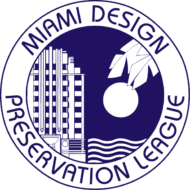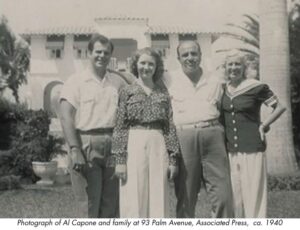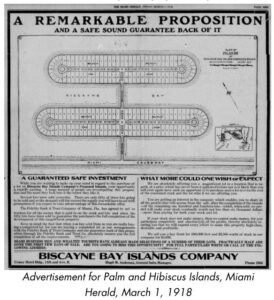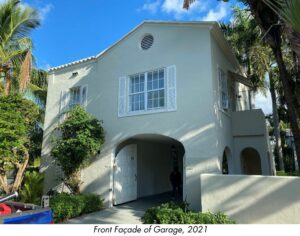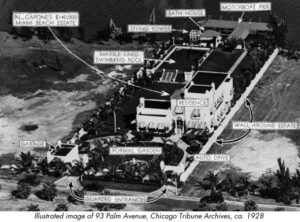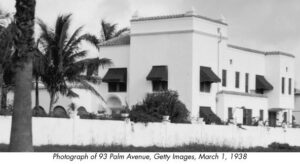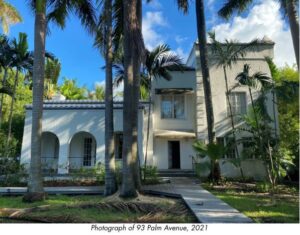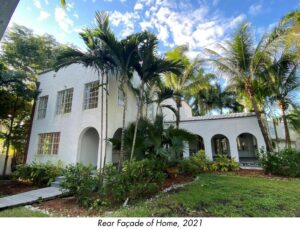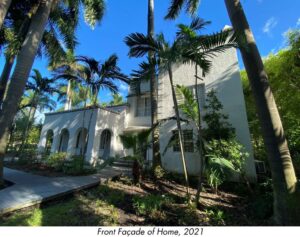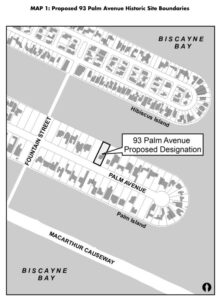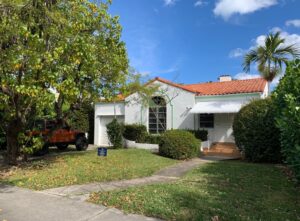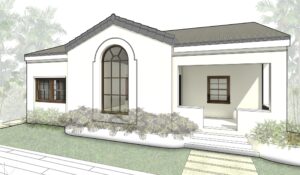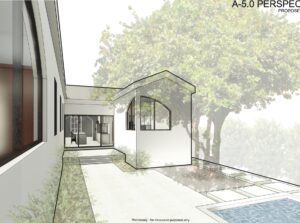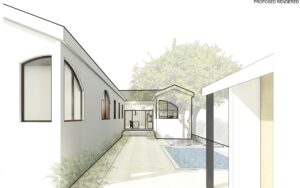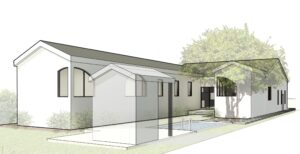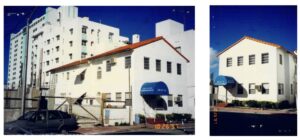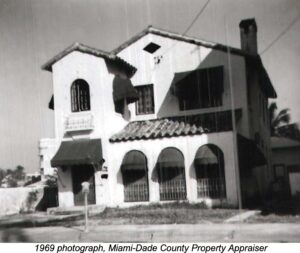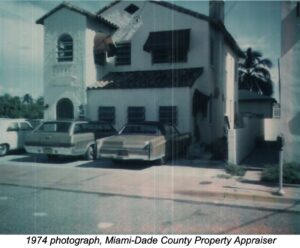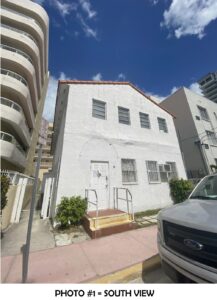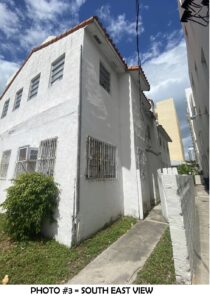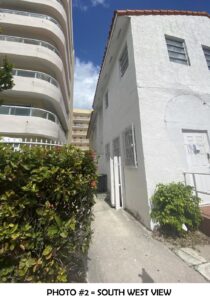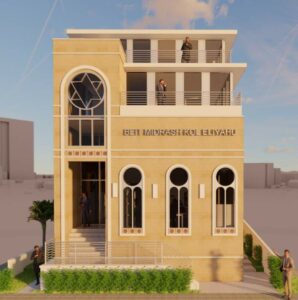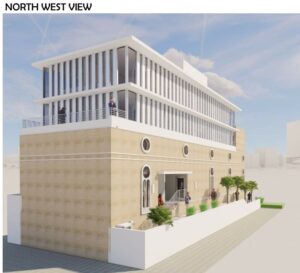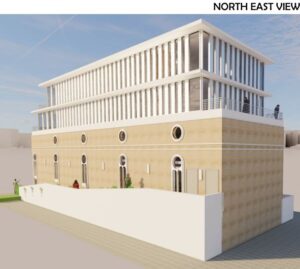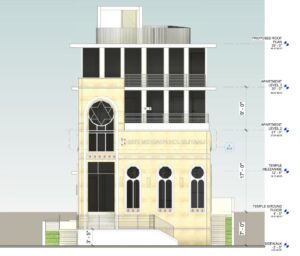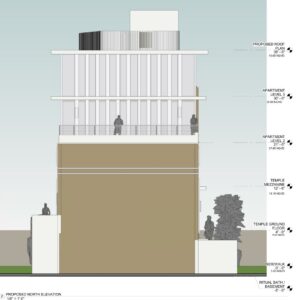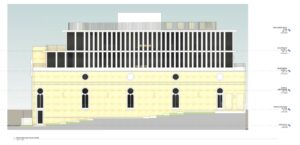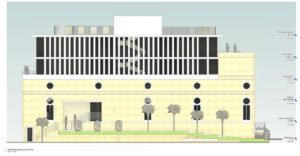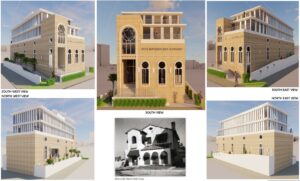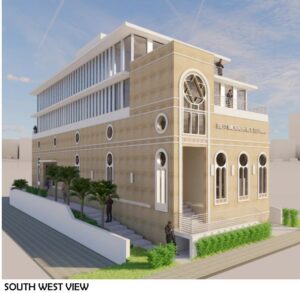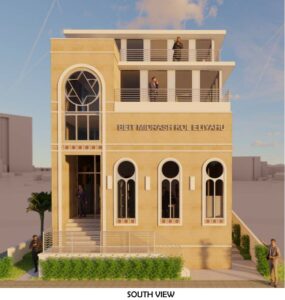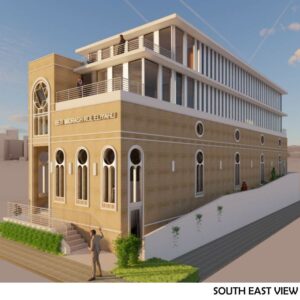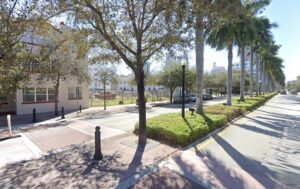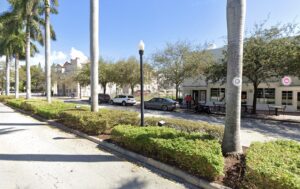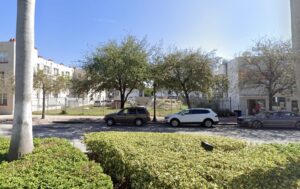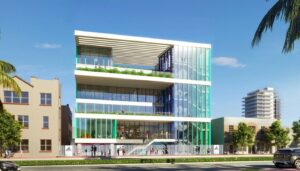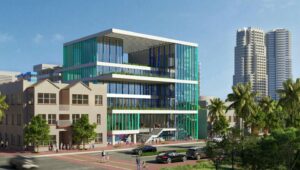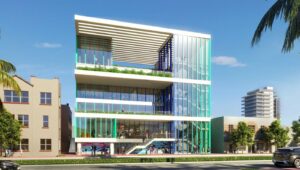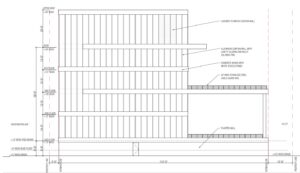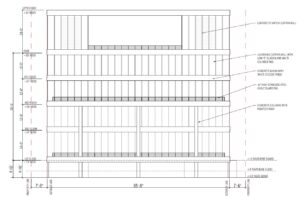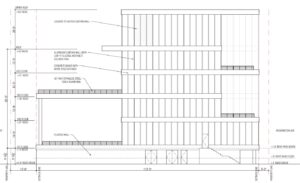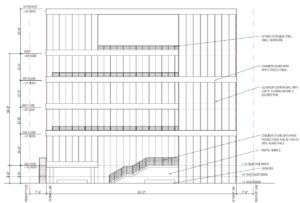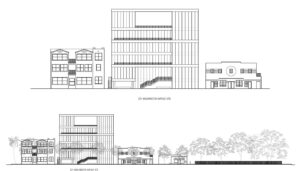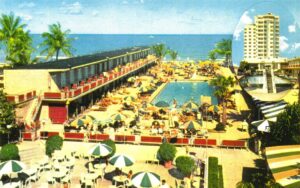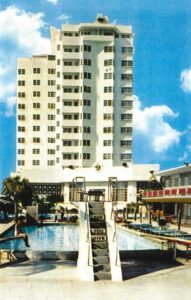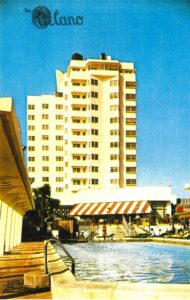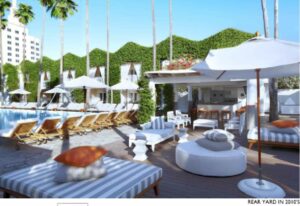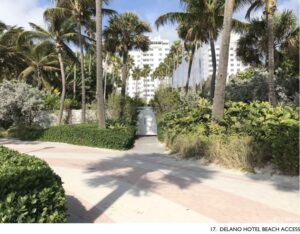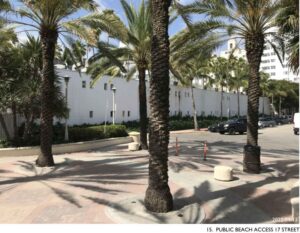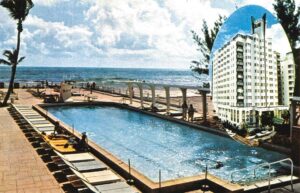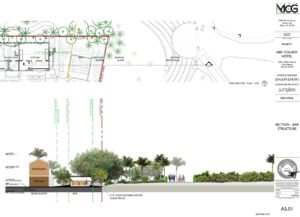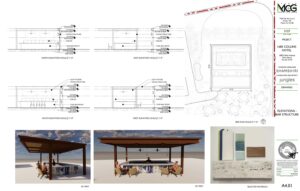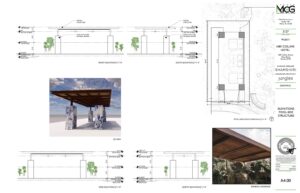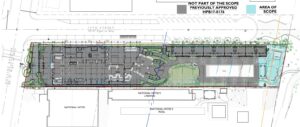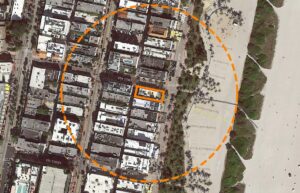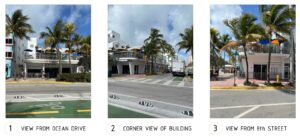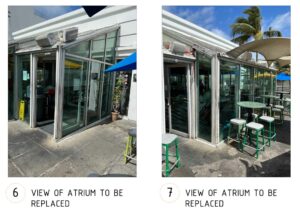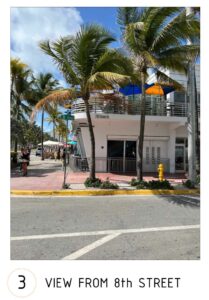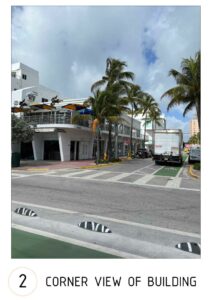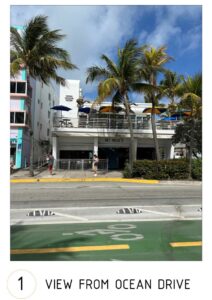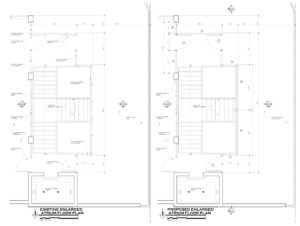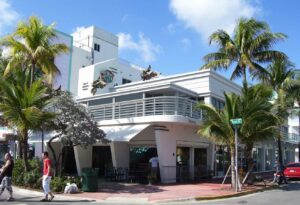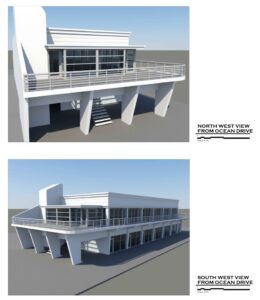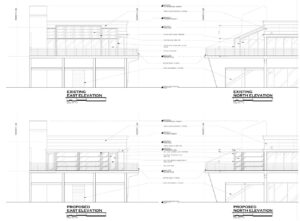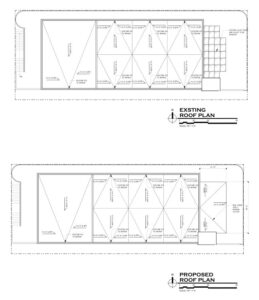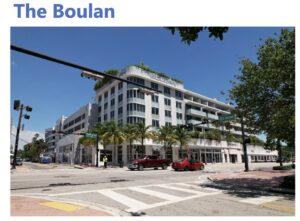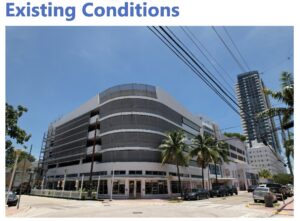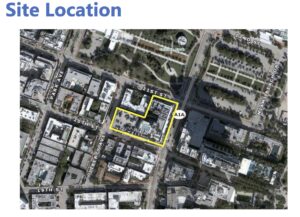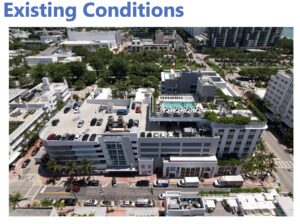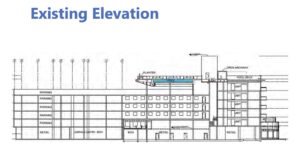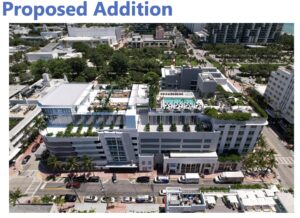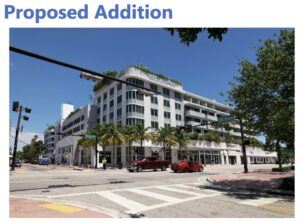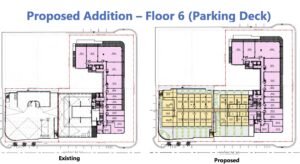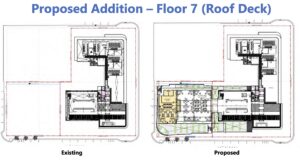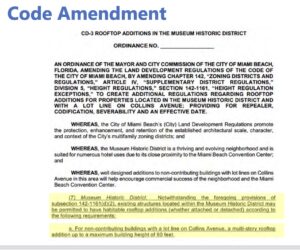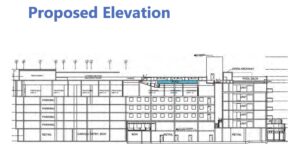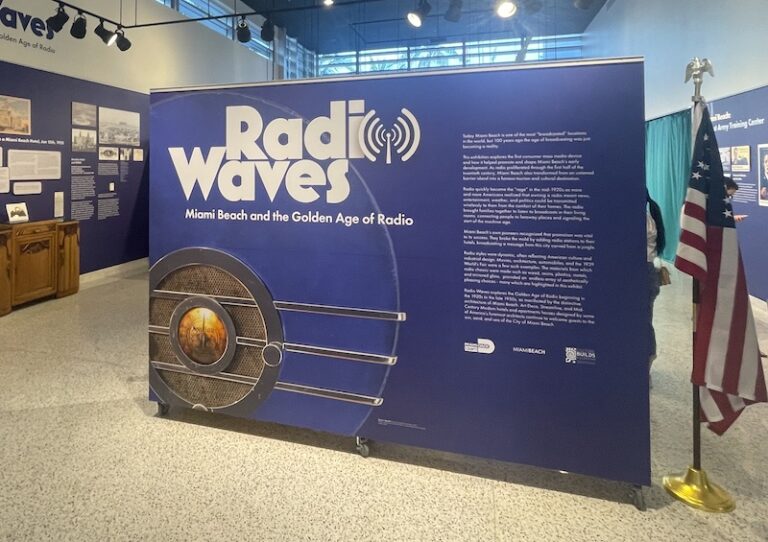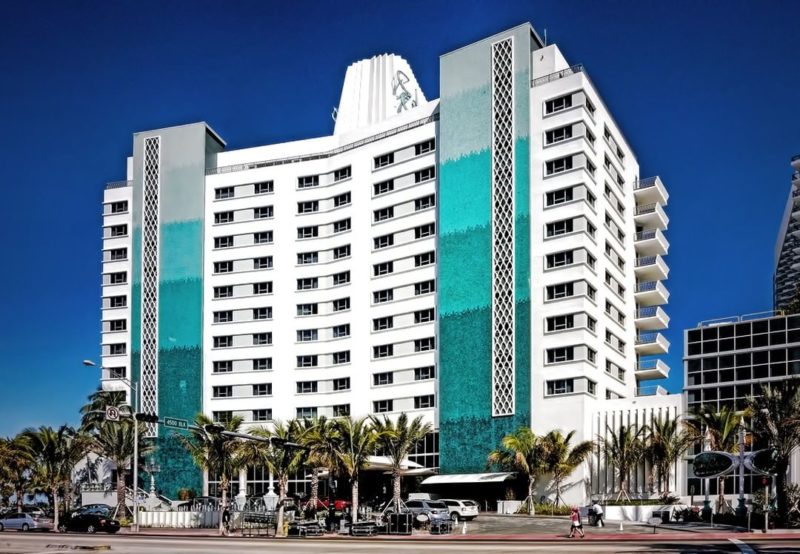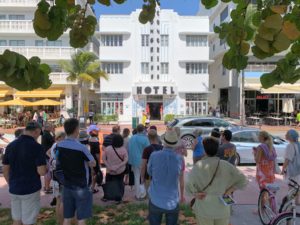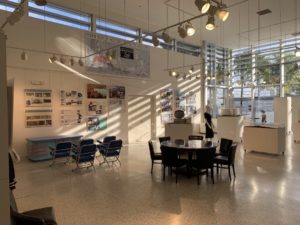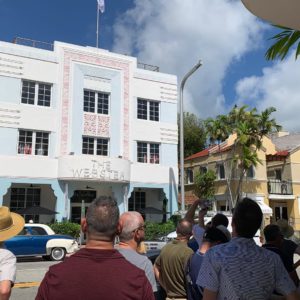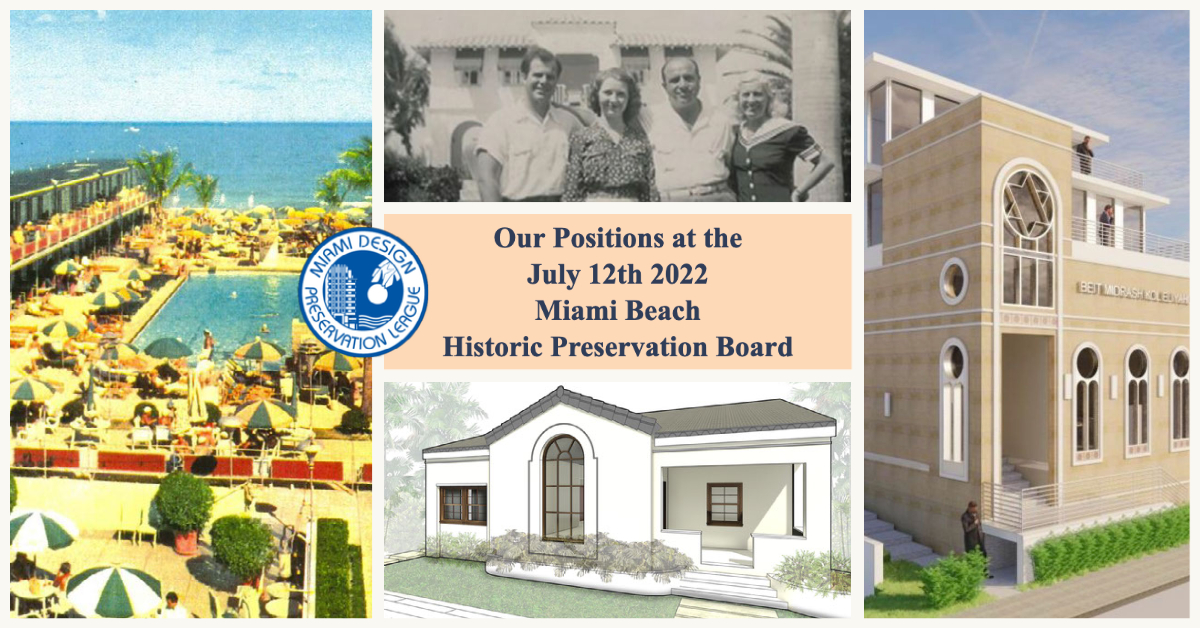
MDPL’s Advocacy Committee has reviewed the following applications and offers our positions below. Please note, the lack of a position on a project does not indicate support for or opposition to that project. To review the Historic Preservation Board Agenda, including public participation information:
REQUEST FOR CONTINUANCES/OTHER
4. HPB21-0485, 93 Palm Avenue – Designation of an Historic Site
Current site
A presentation by the City of Miami Beach Planning Department to the Historic Preservation Board relative to the proposed historic designation of 93 Palm Avenue as an individual local historic site
more details->93 Palm Avenue
City of Miami Beach Designation Report (excerpt below, click here to read the full report):
City of Miami Beach Staff Report Recommendation (excerpt below, click here to read the full report):
PLANNING DEPARTMENT RECOMMENDATIONS (Designation Report):
The Planning Department finds the proposed 93 Palm Avenue Historic Site to be in compliance with the Criteria for Designation numbers 2 & 3 listed in Section 118-592 in the Land Development Regulations of the City Code. Only one of the eight evaluation criteria is required to be satisfied for a property to be eligible for consideration of historic site designation.
While the home located at 93 Palm Avenue is indicative of 1920s residential architecture in Miami Beach, it is not a noteworthy example of the Mediterranean Revival style as it lacks the architectural detailing, massing and proportioning characteristic of this celebrated style. Additionally, no architect is listed on the building card and staff has not been able to locate any information indicating that the home was designed by an architect. Further, the home has been altered including the elimination of several of the more significant architectural details as noted in the preceding section of this evaluation. The most notable aspect of the home is the fact that Al Capone maintained a residence here from 1928 until his death in 1947.
In addition to a lack of architectural merits, staff has concerns relative to the vulnerability of the home with respect to impacts from climate change and sea level rise. Staff has visited the site and observed that the property to the east has a significantly higher yard elevation. It is also important to note that when the property to the west (currently a vacant lot) is developed, a minimum yard elevation of 6.56′ NGVD will be required. This will result in both neighboring properties having a yard elevation slightly above the existing first floor level of 93 Palm Avenue. Further, it is important to note that within this area of the City, new habitable floor area is required to be constructed at a minimum of 10.0′ NGVD, approximately 3′-6″ above the current first floor level. Maintaining the home at its current elevation will undoubtedly have ramifications in the near future.
Finally, staff does not believe that the association with Al Capone warrants the historical designation of this otherwise unremarkable example of a 1920s single-family home. Further, while the developer, Clarence Busch, was an important figure in the City’ development history, his association with 93 Palm Avenue is limited to the development of the property with a home to be sold to another owner. For the reasons outlined above, staff does not recommend that the Historic Preservation Board transmit the proposed historic site designation of 93 Palm Avenue to the Planning Board and City Commission.
Staff Analysis Recommendation
Staff recommends that the Historic Preservation Board does not transmit the attached designation report, pertaining to the proposed 93 Palm Avenue Historic Site, to the Planning Board, and that no further action be taken.
MDPL Position:
MDPL was disappointed to learn that a recent State of Florida bill has limited the ability of the City of Miami Beach and others to regulate the historic preservation of single-family homes that have any floor below the new construction requirements. This is an essential redlining of these homes and neighborhoods: as we have demonstrated, the lowest floor of the Al Capone house would not be susceptible to sea level rise until 2100. But, since it is below the new construction requirements, suddenly it cannot be considered for designation according to this misguided rule.
Furthermore, City of Miami Beach continues to have the power to grant flood waivers to historically designated buildings – which provides significant incentive for property owners to improve/restore their buildings.
MDPL will continue to advocate for the preservation of buildings according to widely adopted local and national standards. We believe preservation and climate change resiliency are not mutually exclusive.
MDPL Position [from May 10th 2022]:
MDPL asks the Historic Preservation Board to defer this item in order to allow for adequate research necessary to properly document the history and evolution of the property. Sadly, the City of Miami Beach Planning Department’s designation report seems to repeat their already-decided position that the property does not meet the very objective criteria of the historic designation process.
On this note, we believe that further research is needed to determine the architect of the property and other information that appears to be missing from the Planning Department report.
While MDPL was previously contacted by the owners’ representatives to meet and discuss the application, we have not had the opportunity to have a substantive meeting up to this point.
Since the HPB took its action, the structure is now currently protected on an interim basis under the Historic Preservation ordinance – therefore, any demolition or major renovation will go through the Historic Preservation Board during this period – great news. However, once the Board moves on this item, it will go to the Planning Board and then to the City Commission. It is possible that if the designation evidence is not sufficient, the Commission could rule against the designation of the property. This would pave the way for the current owner or a future owner to demolish the property without any HP review.
Therefore, it is imperative that this board and the community have more time to build the case for what is – objectively – one of the most historic homes on Miami Beach. Indeed, it’s hard to imagine Miami Beach without prohibition, Al Capone, Mediterranean architecture, Clarence Busch, and 93 Palm Avenue. Let’s not erase or cancel this important part of our city’s history.
MDPL Prior Position [from January 11, 2022]:
MDPL is alarmed by the staff report’s recommendation against historic designation of 93 Palm Island, particularly after providing evidence that the site meets 2 criteria for historic designation. MDPL believes that the site meets more than 2 criteria, although only one is legally required for designation eligibility. The City code, which the HPB is required to follow states in part:
“Sec. 118-592 – Criteria for designation.
(a) The historic preservation board shall have the authority to recommend that properties be designated….. If they are significant in the historical, architectural, cultural, aesthetic, or archeological heritage of the city, the county, state or nation. Such properties shall possess an integrity of location, design, settings, materials, workmanship, feeling or association and meet at least one of the following criteria…””
The architectural significance of this home has been all but erased by the preliminary staff report, which superficially mentions architectural elements that have been altered without highlighting the architectural elements and integrity of site which remain.
Built at an early time of Florida’s history, it is unfortunate but not unusual that the building does not have a listed architect. However, the detailing of the building, its massing, scale, and guest house / main house / cabana house configuration is a notable and it remains one of the earliest examples of the waterfront single-family home typology of Miami Beach.
Its association with Clarence Busch – the original developer of the island, underlines another layer of its history that is glossed over by the City’s report. This notable provenance points to satisfying an additional criterion:
(5) Represent the work of a master, serve as an outstanding or representative work of a master designer, architect or builder who contributed to our historical, aesthetic or architectural heritage
Sea Level Rise Criteria response: City Staff also assert that the home is not worthy of designation because new homes are required to be built at a higher in order to comply with the city’s recent zoning ordinances elevating the required height of new construction. In the case of this neighborhood, a new home would be required to be built 3’6” feet higher than the existing home’s floor elevation.
Far from being a reason to demolish, it should be made clear that this is a normal occurrence on Miami Beach. Staff analysis does not fully inform where the existing home is located in relation to existing sea level and when there may be a risk of sea level flooding. In addition, no analysis is provided of the finished floor of the three individual buildings. Such analysis should be a part of the next step in designation report development.
Our own analysis shows that Miami Beach homes continue to be well above sea level. Weighing the existing home’s finished floor level over its historic value to the fabric of our community is a dangerous precedent that could lead to the end of historic designation.
This issue is important particularly when there is no evidence of near-term risk of sustained flooding from sea level rise at the home. Initial analysis shows the finished floor would not be breached by the mean high water line until approximately 2100, based on existing sea level rise projections. Because of this, historic preservation will likely provide incentives to the owner – including waivers that will allow for the renovation of the property without requiring elevation. Without such designation, it would be unlikely that the property could be renovated without crossing the 50% threshold requiring major upgrades and added cost.
MDPL recommends that the HPB proceed to direct city staff to prepare a designation report in order to move towards the next step: a quasi-judicial public hearing weighing evidence and allowing for public participation. In addition, we respectfully request that this item be continued so as to allow MDPL proper time to prepare its case. The current agenda requirement that all documents be submitted 3 business days before the hearing is a burden on our due process, since the staff report came out only 5 business days before the meeting.
Finally, MDPL remains committed to the survey, identification, and protection of historic resources throughout Miami Beach. Single-family homes are an essential part of the built history and story of Miami Beach. This home in particular meets multiple criteria for historic designation. Demolition of this property would be a substantial loss to the social, cultural, and environmental heritage of our community. We formally request that the HPB recommend designation of 93 Palm Avenue.
SINGLE FAMILY HOMES
6. HPB22-0516, 1735 Lenox Avenue
Current site
Proposed Structures
An application has been filed requesting a Certificate of Appropriateness for the partial demolition, renovation and restoration of the existing single-family home, including the construction of attached additions.
more details->1735 Lenox Avenue
City of Miami Beach Staff Report Recommendation (excerpt below, click here to read the full report):
Staff Analysis:
The subject single-family home was constructed in 1936 and designed by architect Lester Avery in the Mediterranean Revival/Art Deco Transitional style of architecture. The applicant is requesting approval for the renovation and restoration of the existing home and the construction of two attached rear additions.
The applicant is proposing to substantially restore the front façade of the home including the restoration of the original open-air porch, the central arched window feature and the low planter walls. Additionally, as part of the conversion of the garage to interior living space, the garage door is proposed to be replaced with a new window. The window and portion of wall beneath will be recessed 3 inches, delineating the original garage door opening.
Two attached additions are proposed to be constructed at the rear of the home: a small 195 sq. ft. addition at the northeast corner containing a family room and an 872 sq. ft. addition at the southeast corner containing a bedroom and a new master suite. Additionally, a new pool and cabana building are proposed to the constructed in the rear yard.
Staff is highly supportive of the proposed renovation and restoration project. Further, staff has no objection to the rear additions which will not be visible from Lenox Avenue and will not have any adverse impact on the surrounding historic district. Finally, staff would note that the project as proposed—including the proposed additions—remains well under the maximum unit size for the site. As such, staff recommends approval as noted below.
RECOMMENDATION
In view of the foregoing analysis, staff recommends that the request for a Certificate of Appropriateness be approved, subject to the conditions enumerated in the attached draft Order.
MDPL Position:
We are overall very supportive of this proposal to restore and upgrade a historic single-family home in the Palm View district. We thank the owners for their stewardship.
We have two preservation-related concerns: First, the replacement of the roof with non-historical black tiles seems to detract from the original design and materiality of the barrel tile roof. Second, we’d like to confirm that the window/munton configuration for the hurricane impact windows are historically accurate. Sadly, we’ve seen too many homes being remodeled with incompatible roofs and windows.
Continued Items
7. HPB21-0492, 225 37th Street
An application has been filed requesting a Certificate of Appropriateness for the total demolition of the existing buildings on the site and the construction of a new synagogue and variances from the required lot size, lot width, setbacks, projections and yard elevation.
more details->225 37th Street
City of Miami Beach Staff Report Recommendation (excerpt below, click here to read the full report):
Staff Analysis:
The subject property is a substandard sized lot located mid-block on 37th Street between Collins Avenue and Indian Creek Drive. The site is surrounded by a 7-story multi-family residential building to the west and south and two 3-story buildings to the east. The applicant is requesting approval for the design of a new 3-story building to be used as a synagogue. In order to construct the new building, the applicant is proposing the total demolition of the existing structures on the site.
Update
On June 14, 2022, the Board reviewed and continued the subject application to give the applicant additional time to address concerns expressed by the Board. Since the June meeting, the applicant has submitted revised plans in response to the Board’s concerns including the following modifications:
- The base of the synagogue (the first level, mezzanine and tower portion) is proposed to be clad in Jerusalem stone. Additionally, the applicant is proposing to introduce decorative glazed terracotta ornamentation along the lower portions of the front windows, referencing the terracotta roof tiles of the original building.
- The upper two residential floors have been redesigned in a more contemporary manner. Further, the third level has been setback an additional 9’-0” from front façade of the second level. In summary, due to the loss of the vast majority of the significant architectural details that appear to have been located on the primary façade of the original 1928 building during the 1980s and 1990s additions, staff continues to have no objection to the request for total demolition. Additionally, staff believes that the modifications proposed by the applicant result in a design that is more compatible with the surrounding historic district. To this end, the introduction of a base cladding and the change in the character of the residential levels results in an appropriate architectural hierarchy. As such, staff recommends approval as noted below.
VARIANCE ANALYSIS
The applicant is requesting the following variances:
- A variance to reduce by 3,000 sq. ft. the minimum required lot area of 7,000 sq. ft. in order to construct a 3-story building on a property with a lot area of 4,000 sq. ft. Variance requested from: Sec. 142-217. – Area requirements. The area requirements in the RM-2 residential multifamily, medium intensity district are as follows:
Minimum Lot Area (Square Feet): 7,000 - A variance to reduce by 10’-0” the minimum required lot width of 50’-0” in order to construct a 3-story building on a property with a lot width of 40’-0”. Variance requested from: Sec. 142-217. – Area requirements. The area requirements in the RM-2 residential multifamily, medium intensity district are as follows:
Minimum Lot Width (Feet): 50
The subject property is a 40’-0” wide by 100’-0” deep lot, platted in 1916 with the same dimensions and lot area as today. The subject lots size is 4,000 sq. ft., where the minimum of 7,000 sq. ft. is required and the lot width is 40’-0” where the minimum required is 50’-0”. Without the granting of variances 1 & 2, the construction of the proposed building, or any new structure for that matter, would not be permitted. Staff finds that the original and existing size of the lot size and width, establishes the hardship that justifies the variances requested.
- A variance to reduce by 14’-3” the minimum required front yard setback of 20’-0” in order to construct a 3-story building at a setback of 5’-9” from the south side property line. Variance requested from: Sec. 142-218. – Setback requirements. (a) The setback requirements in the RM-2 residential multifamily, medium intensity district are as follows:
Subterranean and pedestal, Front: 20’-0” - A variance to reduce by 7’-6” the minimum side interior setback of 7’-6” in order to construct an exterior stair and a portion of the lower level with at a zero (0’-0”) setback and the remainder of the building at a setback of 5’-0” from the east side property line. Variance requested from: Sec. 142-218. – Setback requirements. (a) The setback requirements in the RM-2 residential multifamily, medium intensity district are as follows:
Subterranean and pedestal, Side, Interior: Single lots less than 65 feet: 7’-6” - A variance to reduce by 10’-0” the minimum rear yard setback of 10’-0” in order to construct a 3-story building at a zero (0’-0”) setback from the north side property line. Variance requested from: Sec. 142-218. – Setback requirements. (a) The setback requirements in the RM-2 residential multifamily, medium intensity district are as follows:
Subterranean and pedestal, Rear: Non-oceanfront lots: 10% of lot depth (10’-0”) - A variance to exceed by 3’-5 3⁄4” the maximum projection of 1’-5 1⁄4” (25%) into the proposed 5’-9” front yard in order to construct a stair with a projection of 4’-11” (85.5%) into the proposed front yard. Variances requested from: Sec. 142-1132. – Allowable encroachments within required yards for districts other than single-family districts.
(o) Projections. Every part of a required yard shall be open to the sky, except as authorized by these land development regulations. The following may project into a required yard for a distance not to exceed 25 percent of the required yard up to a maximum projection of six feet, unless otherwise noted. (6)Porches, platforms and terraces up to 30 inches above the adjusted grade elevation fo the lot, as defined in chapter 114.
Variances 3 through 6 relate to the proposed setbacks of the structure. Staff would note that within the RM-2 zoning district, the maximum permitted height is 75’-0”, measured from base flood elevation plus freeboard. In this instance, the applicant is proposing a 3-story, 35’-0” tall building, less than half of the maximum permitted height in order to be compatible with the scale of the historic district. Additionally, as the building is proposed to be a synagogue, the height was purposely limited to a maximum of 3-stories so that an elevator would not be required. This is due to the limitation of elevator usage during Shabbat. Staff believes that this specific religious requirement, the existing undersized lot area and width, and the certificate of appropriateness criteria regarding compatibility of scale, create the practical difficulties that warrant the approval of the requested variances.
7. A variance to reduce by 2.91’ NGVD the minimum required yard elevation of 6.56’ NGVD in order to provide a minimum yard elevation of 3.65’ NGVD. Variance requested from:
Sec. 142-216. – Development regulations.
(2) Exterior building and lot standards:
(a.) Minimum yard elevation requirements.
(1.) The minimum elevation of a required yard shall be no less that five feet NAVD (6.56 feet NGVD), with the exception of driveways, walkways, transitions areas, green infrastructure (e.g., vegetated swales, permeable pavement, rain gardens, and rainwater/stormwater capture and infiltration devices), and areas where existing landscaping is to be preserved, which may have a lower elevation.
The above regulation requires that all required yards shall have a minimum yard elevation of 6.56’ NGVD, with exceptions. Staff would note that the majority of the required yards are occupied with walkways which are allowable exceptions, but there are portions of the yards that do not qualify for and exemption and are required to be at the minimum yard elevation. Due to the undersized lot and the approximately 7’-0” change in elevation from the existing sidewalk level (3.65’ NGVD) to the proposed first floor of the building (10.65’ NGVD) there is little room on the site to transition these minimal areas to the minimum yard elevation. As such, staff finds these special conditions warrant the granting of this variance.
In summary, staff remains supportive of the proposed project and recommends approval as noted below.
RECOMMENDATION
In view of the foregoing analysis, staff recommends the request for a Certificate of Appropriateness and variances be approved, subject to the conditions enumerated in the attached draft Order, which address the inconsistencies with the aforementioned Certificate of Appropriateness criteria and Hardship and Practical Difficulties criteria, as applicable.
MDPL Position:
The design continues to improve. However, MDPL has continued concerns about the compatibility of the new structure. MDPL remains available to connect with the applicant in a meaningful way to discuss design possibilities.
MDPL Position [from 6-14 HPB]
MDPL appreciates the refinement of the design and the attempt to connect with the original structure on the site. Unfortunately, we believe the overall design lacks contextuality to and compatibility with the historic district. We believe further study is needed to design a building that properly reflects its time and location.
MDPL Position [from 4-12 HPB]:
MDPL appreciates the proposal and the needs of the congregation. We do not believe the application is complete, because it lacks a historic resources report showing the evolution of the building and its history.
MDPL in its preliminary research found the below photo of the original structure. It appears from comparing the aerials in the staff report that the existing structure, a contributing building in the historic district, may still be intact. With the newly uncovered historic photo of the original structure, we would encourage additional analysis of what could be done with the property. Perhaps an alternative can be developed to meet the needs of the congregation while also bringing back the historic structural to its original front facade.
8. HPB22-0513, 251 Washington Avenue
Current site
Proposed Structures
An application has been filed requesting a Certificate of Appropriateness for the construction of new educational facility on a vacant site and variances from the minimum required interior side yard setbacks for a school and loading space requirements.
more details->251 Washington Avenue
City of Miami Beach Staff Report Recommendation (excerpt below, click here to read the full report):
Staff Analysis:
The subject site is located mid-block on Washington Avenue between 2nd and 3rd Streets. The applicant is proposing the construction of a 4-story private school for elementary and middle school aged children. The proposed school will contain 6 classrooms, 4 multi-purpose rooms, a cafeteria, several outdoor spaces including a recreational area and a rooftop garden, and a partially below grade parking garage with 18 parking spaces.
Update
On June 14, 2022, the Board reviewed and continued the subject application to a date certain of July 12, 2022. Since the June meeting, the applicant has submitted revised plans in response to the Board’s comments including the following modifications:
• The variance request pertaining to the requirement to provide off-street loading spaces on site has been withdrawn by the applicant. The required loading spaces are proposed to be located within the parking garage level.
• According to the applicant, the renderings have been revised to more accurately reflect the elevation drawings. Staff would note that the height of the height exceptions remains 20’-0”. As such, staff’s recommendation remains unchanged. Additionally, the plans and renderings have been updated to reflect the proposed site fencing and the second staircase in the north side setback.
Staff commends the applicant for proposing to construct a high-quality structure on the vacant lots. Over time, the vacant property has had an increasing adverse impact on the urban context of Washington Avenue as well as the surrounding historic district.
While supportive of the overall contemporary design language for the school, staff has some concerns regarding the mass and scale of the structure. In this regard, the RPS-3 zoning district permits a maximum allowable building height of 50’-0” and the City Code permits height exceptions not to exceed 25’-0” above the 50’-0” maximum height.
The applicant is proposing to construct several mechanical rooms, restrooms and stair and elevator bulkheads at a height of 20’-0” above the main roof line. This, in combination with the location of the primary stair structure along the front setback line and rooftop the trellis structure that projects to the front setback line, results in a building that appears to be 70’-0” tall. Staff believes that the proposed height of the structures above the main roof line is excessive and not compatible with the scale and context of the surrounding historic district. Consequently, staff recommends that all height exceptions not exceed 10’-0” above the main roof line, except for the elevator override structures. Additionally, staff recommends that the rooftop trellis be setback in line with the equipment room located at the northwest corner of the roof. For comparison, staff has provided the updated currently proposed rendering and an approximation of staff’s recommendations on the following page.
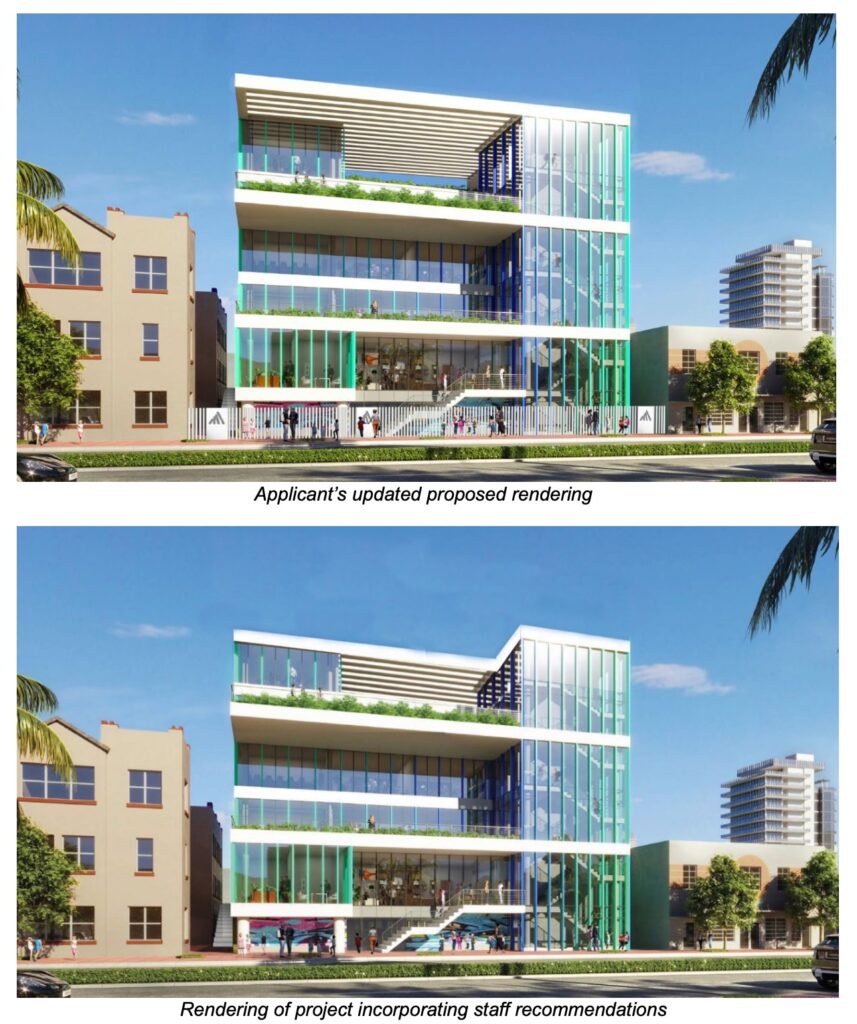
Finally, it is important to note that the proposed project was reviewed and approved by the Planning Board on June 21, 2022, with regard to important issues related to the operations of the project, including parking, traffic, deliveries, sanitation and security.
In summary, staff is highly supportive of the proposed project and believes that with incorporation of the modifications outlined above the project will be a more compatible with the adjacent contributing buildings and surrounding historic district.
VARIANCE ANALYSIS
The applicant has withdrawn variance request No. 3 pertaining to the requirement to provide off- street loading spaces on site. The applicant is proposing to provide the required loading spaces within the parking garage level.
The applicant is requesting the following variances:
- A variance to exceed by 46’-2” the minimum required side interior setback for a school of 50’-0” in order construct the school building at a setback of 7’-6” from the north side property line and stairs at the ground level at a setback of 3’-10” from the north side property line.
- A variance to exceed by 42’-6” the minimum required side interior setback for a school of 50’-0” in order construct the school building at a setback of 7’-6” from the south side property line. Variances requested from:
Sec. 142-1131. – Generally.
(d) Minimum side yards, public and semi-public buildings. The minimum depth of interior side yards for schools, libraries, religious institutions, and other public buildings and private structures which are publicly used for meetings in residential districts shall be 50 feet, except where a side yard is adjacent to a business district, a public street, bay, erosion control line or golf course, and except for properties that have received conditional use approval as a religious institution located in the 40th Street Overlay, in which cases the depth of that yard shall be as required for the district in which the building is located. In all other cases, the side yard facing a street shall be the same as that which is required for the district in which the lot is located.
In general, the required side setbacks for a main use building within the RPS-3 zoning district (with a lot width of more than 50’-0”) is 7’-6” on both sides. However, for schools and institutions, the City Code requires side setbacks of 50’-0”. In this case, the lot width of the property is 100’- 0” and, if the required 50’-0” setback on both sides is applied, the construction of any structure on the site for use as a school would not be possible, unless a variance is approved. Based on the width of the lot and the proposed use as a school, staff finds that there are practical difficulties that justify the requested variances.
RECOMMENDATION
In view of the foregoing analysis, staff recommends the request for a Certificate of Appropriateness and variances be approved, subject to the conditions enumerated in the attached draft Order, which address the inconsistencies with the aforementioned Certificate of Appropriateness criteria and Hardship and Practical Difficulties criteria, as applicable.
MDPL Position [from 6-12 HPB]:
MDPL appreciates the thoughtfulness of the design proposal for a new school in the vibrant South of Fifth neighborhood. We understand the applicant’s desire to have a new striking landmark civic structure in the historic neighborhood. Due to this, we support the variance from the 50ʹ offset requirement, which will allow a school to be built on this site in spite of the current zoning effectively prohibiting such a land use due to the variance requirement.
While generally support of the project, we have concerns about the perceived height of the top floor. We appreciate staff’s recommendation to set back the shade structure on the top level as well as to reduce the allowed height exception. However, we believe a hybrid approach may work best: retain the trellis footprint as proposed but lower the height in line with staff’s recommended 10ʹ. This would retain the design language while making the overall massing more compatible with the historic district.
New Applications
9. HPB22-0519, 1685 Collins Avenue
Current site
Proposed Structures
An application has been filed requesting a Certificate of Appropriateness for the design of a new rear yard site plan including landscape and hardscape modifications.
more details->1685 Collins Avenue
City of Miami Beach Staff Report Recommendation (excerpt below, click here to read the full report):
Staff Analysis:
The Delano Hotel, constructed in 1947 and designed by architect B. Robert Swartburg, is an outstanding example of Art Deco architecture with Post War Modern influences. Notable features include, a sawtooth building form, multi-finned tower and numerous octagonal motifs including portholes and columns. On February 8, 2022, the Board approved a Certificate of Appropriateness for renovation and restoration of the hotel and rear cabana structure.
The applicant is currently requesting approval for several improvements to the easternmost portion of the site; within the oceanfront and dune preservation overlay districts. These districts serve as transitional zones from the developed upland area to the dune and beach. Improvements include the introduction of two new shade structures and landscape and hardscape modifications. Finally, staff would note that the proposed scope of work removes several existing non- conformities within the overlays and the proposed modifications comply with all overlay regulations. As such, staff recommends approval as noted below.
RECOMMENDATION
In view of the foregoing analysis, staff recommends the application be approved subject to the conditions enumerated in the attached draft Order, which address the inconsistencies with the aforementioned Certificate of Appropriateness criteria.
MDPL Position:
We support the Staff Recommendations for this project.
10. HPB22-0522, 760 Ocean Drive
Current site
Proposed Structures
An application has been filed requesting a Certificate of Appropriateness for modifications to the east façade of the building.
more details->760 Ocean Drive
City of Miami Beach Staff Report Recommendation (excerpt below, click here to read the full report):
Staff Analysis:
The existing building on the site was original constructed in 1925 as a 2-story apartment building. In 1953, a 2-story addition was constructed at the front of the building along Ocean Drive containing a new lobby and residential and hotel units. In 1990, the building was further renovated including several additions and a new façade treatment. Due to the significant alterations that have taken place over time, the Historic Preservation classified the building as Non-Contributing when the district was designated in 1986.
The applicant is currently requesting approval for the replacement of the existing shed roof atrium structure located at the second level of the building facing Ocean Drive. The existing atrium was constructed as part of the 1990s renovation of the building. The new atrium structure has been designed in a manner that is compatible with the existing architecture and will not have any adverse impact on the surrounding historic district. As such, staff recommends approval as noted below.
RECOMMENDATION
In view of the foregoing analysis, staff recommends the application be approved subject to the conditions enumerated in the attached draft Order, which address the inconsistencies with the aforementioned Certificate of Appropriateness criteria.
MDPL Position:
MDPL Supports Staff Recommendations for this proposal.
DISCUSSION ITEMS
11. Current incentives for the retention of architecturally significant single-family homes.
MDPL Position:
MDPL Continues to work with various stakeholders to support the preservation of architecturally significant single-family homes. With the recent passing of HB423, there is even more imperative for the city and MDPL to build support for the preservation of single-family homes and neighborhoods.
The existing zoning for single-family homes ‘incentivizes’ the demolition of these homes, because the allowance for new construction (50% unit size) is often dramatically larger than the size of existing homes. Until the formula is changed, the balance continues to favor speculative demolition and redevelopment. As seen in a recent Miami Herald article, developer Todd Glaser has to purchase 30-40 homes in the next few months, to knock those down in order to sell them as vacant lots to “wealthy executives and investors.” Continued lack of regard for our historic fabric will lead to a continued decline of the character and scale of our neighborhoods, which the city is supposed to be protecting.
From the Historic Preservation Board perspective, we need to inform owners on the benefits of voluntarily designating their homes as historic. One of the greatest benefits is the ability to receive a flood plain waiver – making renovation and restoration more feasible and practical.
12. Museum Historic District – height and rooftop addition regulations
Current Site
Proposed Structure
MDPL Position:
MDPL maintains its opposition to height increases within historic districts that are not a part of an adopted, holistic master plan for the neighborhood. While we don’t have full details on this proposal in relation to the certificate of appropriateness criteria, our position remains opposed to height increases within historic districts.
13. Collins Avenue and Ocean Drive MXE Overlay
more details->Collins Avenue and Ocean Drive MXE Overlay
City of Miami Beach Staff Report Recommendation (excerpt below, click here to read the full report):
PLANNING ANALYSIS
The proposal herein would establish the Collins Avenue and Ocean Drive MXE Overlay. This Overlay would include the properties located east of Collins Avenue (including Ocean Drive), between 5th Street and 16th Street, with an underlying MXE zoning district. See the Future Land Use/Site Map at the end of the report.
This overlay provides tangible incentives to encourage the development of a mix of residential, hotel and office uses to balance and diversify the City’s economic base. Additionally the overlay seeks to reduce the number and intensity of high impact outdoor and open air entertainment establishments that negatively impact the overlay area, and transform the neighborhood into one that is more balanced in terms of uses and fosters a live, work, and play environment. The overlay intends to facilitate improvements to properties, while maintaining the architectural and historic character of the existing building typology.
The overlay also offers incentives through the approval of a Special Development Plan (SPD) by the City Commission. The SPD would be subject to the same approval process as an ordinance amendment, including Planning Board review, and would be subject to the following requirements:
- Shall be consistent with the Comprehensive Plan.
- The SDP shall contain a minimum of two (2) platted lots.
- Each application shall be accompanied by a site plan meeting the requirements of section 118-1, and such other information as may be required for a determination of the nature of the proposal and its effect on the Comprehensive Plan, the neighborhood, and surrounding properties.
- Each SDP shall contain a sunset provision, as may be determined by the City Commission, in which the approved incentives shall no longer be available for the development of the site.
- The SDP shall not supersede the Certificate of Appropriateness (COA) processes in Chapter 118, Article X of the LDR’s.
- The SDP shall not supersede any other Land Use Board process as may be required by the LDRs. The primary incentive offered through an SDP is a Floor Area Ratio (FAR) increase. For reference, the underlying FAR in the MXE district is 2.0. The proposed FAR increase is as follows:
- The maximum FAR shall not exceed 3.0.
- For any legally non-conforming development with an FAR that exceeds 3.0, the legal nonconforming floor area may be retained and/or reconstructed. An additional FAR of 0.25 shall be available above the legally nonconforming floor area. Additionally, as part of the SPD, the City Commission can grant waivers of the following development regulations:
- Maximum Building Height.
- Setback Requirements.
- Additional Regulations for New Construction.
- Allowable Encroachments Within Required Yards.
- Height Regulation Exceptions.
- Off-street parking requirements, provided that the development provides for alternative modes of transportation.
The proposed overlay also encourages unified development sites with lots fronting on Ocean Drive and Collins Avenue. To this end the movement of FAR from properties fronting Ocean Drive to properties fronting Collins Avenue is encouraged through Ocean Court alley vacations as follows:
- The City Commission may grant vacations of the Ocean Court alley, including the sale of air rights, in order to allow for unified development sites that contain properties that front Ocean Drive and Collins Avenue, subject to the requirements of the City Charter and City Code.
- The vacation shall include a perpetual easement in favor of the City over the ROW, to ensure continued public use of the ROW for City access, pedestrian and vehicular travel, and utilities.
- The vacated alley shall be improved to enhance the beauty of the neighborhood. Improvements may include enhanced hardscape, lighting, and artistic elements. The vacated alley shall be maintained clean and free from debris.
- Where feasible, indoor storage areas for deliveries and garbage pickup shall be provided abutting the alley.
- Pedestrian bridges may be allowed to provide physical connections between the unified lots, subject to the review and approval of all applicable City Departments and provided they do not impede vehicular travel. In order to safeguard the quality of life and character of the community from any potential impacts of these incentives, the City Commission can include any necessary conditions as part of the SDP. Additionally, the FAR and SDP incentives in the would only available to projects that comply with the following regulations:
- The main use on the property shall consist of residential, hotel and/or office.
- Outdoor or open air entertainment shall be prohibited anywhere on the property.
- The property owner or condominium association, as applicable, voluntarily proffers to record a restrictive covenant running with the land, in a form approved by the City Attorney, prohibiting short-term rentals on the property in perpetuity.
- All legally nonconforming uses shall cease operation.
- Existing buildings shall be fully renovated.
- The building shall have central air conditioning or flush-mounted wall units; however, no air conditioning equipment may face a street.
- All non-impact resistant windows and doors shall be replaced with impact resistant windows and doors.
- Developments are encouraged to incorporate accessory uses that promote arts and culture.
- Approval of hotel uses, including all accessory uses to the hotel, shall be at the discretion of the City Commission within the SPD. A detailed hotel and accessory use operations plan shall be provided to the City Commission, and the use of hotel within the SPD shall be at the complete discretion of the City Commission.
The proposed LDR amendment has a companion Comprehensive Plan amendment, to authorize the implementation of the FAR incentives within the MXE future land use category. The remainder of the incentives are consistent with the Comprehensive Plan.
CITY CHARTER ANALYSIS
The proposal to increase the FAR is affected by Section 1.03(c) of the City Charter, which partially states the following: The floor area ratio of any property or street end within the City of Miami Beach shall not be increased by zoning, transfer, or any other means from its current zone floor area ratio as it exists on the date of adoption of this Charter Amendment (November 7, 2001), including any limitations on floor area ratios which are in effect by virtue of development agreements through the full term of such agreements, unless such increase in zone floor area ratio for any such property shall first be approved by a vote of the electors of the City of Miami Beach. As the proposed Ordinance requires an affirmative vote of the electorate, only approval at First Reading may take place, prior to a citywide election. If the proposed FAR increase is approved by a majority of City of Miami Beach voters, Second Reading / Adoption of the Ordinance would be scheduled for the next available City Commission meeting after the election.
COMPREHENSIVE PLANNING REVIEW PROCESS
This referral includes a text amendment to the Comprehensive Plan. Under Section 163.3184(2), Florida Statutes, this amendment shall follow the expedited state review process for adoption of comprehensive plan amendments. This process requires a public hearing by the local planning agency (Planning Board), a public transmittal hearing before the City Commission, after which the amendment must be transmitted to several state agencies for a 30-day review period, and a final adoption public hearing before the City Commission. The amendment is effective 31-days after it is adopted if there are no appeals.
SUMMARY
The proposal herein reflects a comprehensive approach to balancing the economic realities of development within the MXE district and maintaining the character defining scale and identity of the City’s signature postcard. It is also important to note that any development seeking incentives via an SPD approval will also require the review and approval of the historic preservation board, pursuant to the certificate of appropriateness criteria.
RECOMMENDATION
In view of the foregoing analysis, staff recommends that the Planning Board transmit the subject Ordinances, pertaining to the Comprehensive Plan and Land Development Regulations amendments, to the City Commission with a favorable recommendation.
MDPL Position:
MDPL is strongly opposed to any attempts that would limit the public’s ability to vote on FAR increases as prescribed by our city charter. This ordinance is an attempt to grant ‘preapproval’ to upzone our historic district, placing more power on the elected body and impacting the HPB’s ability to ensure compatible development within our historic districts. We believe FAR or height incentives should only be contemplated as part of an adopted, holistic master plan with community consensus. We urge the HPB to make a resolution opposing placing this on the November ballot.
